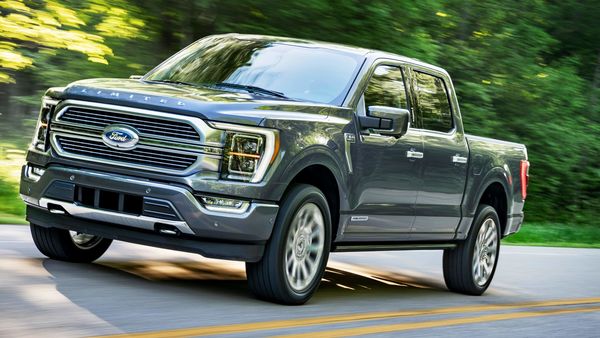Introduction
In the realm of transportation and civil engineering and a few elements evoke as much historical intrigue and practical ingenuity as the fordű. Whether tracing its roots back through centuries of human innovation or examining its contemporary of the relevance in global infrastructure. The for dű stands as a testament to human adaptability and engineering the prowess.
What is a fordű?
A fordű. That also known simply as a ford and refers to a shallow section of a river or stream. Where the water’s depth allows. It to be crossed by wading on horseback or by the vehicle. Unlike bridges that span watercourses with engineered structures of the fords utilize to natural or minimally engineered of passages.
History of for dű
Fords have been integral to human civilization since ancient times. Early civilizations discovered and utilized natural fording points to facilitate the trade migration and communication. The concept evolved alongside human settlements and the adapting to different terrains and cultural needs.
Early origins
The earliest fords likely emerged when early humans first encountered bodies of the water they needed to traverse. Natural features such as a shallow riverbeds or naturally occurring gravel bars provided convenient crossing points.
Evolution over centuries
As societies developed so did the methods and technologies for crossing rivers and streams. Historical accounts from various cultures around to the world highlight the strategic importance of fords in warfare and trade and exploration.
Types of fordű
Fords can be categorized into two main types:
Natural fordű
These are unmodified crossings formed by natural conditions like river morphology and sediment deposition. They often require to the careful navigation and are subject to seasonal changes in water depth.
Engineered for dű
Modern engineering techniques sometimes alter natural fords to improve usability and the safety. Reinforcement with materials like gravel and the stone or concrete can be stabilize the crossing. Making it more reliable for regular of use.
Geographical Distribution
Fords can be found on every continent and the adapted to local environmental to conditions and cultural practices. In regions where infrastructure is limited or fords continue to serve as vital links in transportation of networks.
Global examples of for dű
From the fjords of Scandinavia to the rivers of Africa and the Americas of the fords are prevalent in the diverse landscapes. Each region offers unique on challenges and opportunities for the utilizing these the natural of crossings.
Environmental impact

While typically less intrusive than bridges of the fords can still impact aquatic ecosystems and water quality. Proper the management and ecological assessments are crucial to mitigate these effects.
Engineering Aspects of fordű
Designing and constructing a ford requires careful consideration of several factors:
Design considerations
Engineers must assess water flow and the sediment transport. And substrate stability to ensure the ford remains navigable to the under of various conditions.
Construction techniques
Traditional methods involve shaping the riverbed or adding of materials to create a stable crossing. Modern approaches may use geo-textiles or eco-friendly materials to enhance of the durability and minimize environmental the impact.
Challenges Associated with for dű
Despite their historical significance and practical of the utility and some fords present several challenges:
Environmental factors
Changes in weather patterns and land use can alter ford conditions for a affecting usability and safety.
Safety concerns
Navigating a ford requires skill and caution can be especially during periods of high the water flow or unexpected hazards and beneath the surface.
Benefits of for dű
Fords offer several advantages over more substantial and infrastructure:
Accessibility
They provide cost-effective access across water bodies. Particularly in remote or rural areas where bridges may be impractical.
Cost-effectiveness
Compared to bridges fords require minimal construction and maintenance. Making them a budget-friendly option for a local communities.
Cultural Significance
Across cultures of the fords have inspired folklore and the art and literature:
Folklore and stories
Many cultures have myths and legends surrounding famous fords. Often portraying them as a symbolic crossings between the mundane and the supernatural.
Fordű in art and literature
Artists and writers throughout history have depicted fords as symbols of adventure. Exploration and the human of the connection to the our nature.
Modern Applications
In today’s world and fords continue to play a role in various of applications:
Contemporary use cases
They are utilized in agriculture, emergency response and recreational to activities providing essential links in both urban and rural settings.
Technological advancements
Advances in materials science and hydrology have improved. The design and sustainability of engineered fords expanding their practicality and lifespan.
Environmental Impact
While generally less intrusive than bridges the fords still pose environmental to the considerations:
Sustainability aspects
Efforts are underway to design eco-friendly fords that minimize disruption to aquatic habitats and promote natural water flow.
Conservation efforts
Environmental assessments and mitigation measures help tro preserve the ecological balance of the around the all fords. Ensuring their sustainable use for the future of generations.
Safety Measures
To enhance safety for users and protect natural resources regulations and guidelines govern ford design and maintenance:
Regulations and guidelines
Authorities set standards for ford construction or signage and maintenance practices to minimize risks and ensure public safety.
Best practices
Training programs well educate the drivers and pedestrians on safe ford of navigation . The techniques to the emphasizing awareness and preparedness.
Future Trends
Looking ahead and the several trends are shaping the future of fords:
Innovations in fordű technology
Research continues into materials and construction techniques. That enhance ford durability and minimize environmental impact.
Predictions for the future
As populations grow and infrastructure needs evolve. Fords may to see renewed on the interest as sustainable and the cost-effective solutions for crossing water bodies.
Conclusion
In conclusion. The fordű remains a vital component of global transportation and cultural of heritage. From its ancient origins to modern applications. This natural crossing continues to adapt and serve communities worldwide. As technology and environmental awareness advance. The role of fords in sustainable to development and ecological stewardship will only grow more significant.
FAQs about fordű
- What are the main advantages of using a fordű? Fords are cost-effective. Easy to maintain and provide accessible and the crossings in various terrains.
- How deep can a typical fordű be? The depth of a ford varies depending on the water level .And substrate typically ranging from shallow to moderate of the depths.
- Are there any risks associated with using a fordű? Yes the risks include sudden changes in water depth. Unseen the obstacles and the potential for vehicles to get stuck.
- How does a fordű differ from a bridge? Fords are natural or minimally the engineered crossings. Whereas bridges are a man-made structures to that span water for the bodies.
- Can fordűs be used in urban areas? While less common and the engineered fords can be designed for urban settings to provide pedestrian and vehicular of the crossings.
This comprehensive article aims to provide readers with a thorough understanding of fordűs. Blending historical insights with practical applications and future considerations.
